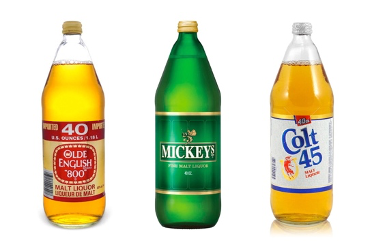Tips From the Field
Tri-Continental Perspective on Measuring Alcohol Use
By Anna Martin
The key to the success of our URBAN ARCH research studies is the ability to accurately measure alcohol use among our HIV-positive participants. While efforts were made at study start up to harmonize measures to allow for future cross-cohort comparisons, certain adaptations were necessary in order to account for cultural differences given that participants are recruited from three very different locations across three continents. This edition of URBAN ARCH Tips from the Field will explore how alcohol use is measured in our cohorts in the United States, Russia, and Uganda.
Types of Alcohol

When measuring alcohol use, it is important to provide examples that are culturally relevant, as types of alcohol commonly consumed may vary by location. The URBAN ARCH Boston team asks participants about consumption of wine, beer, wine coolers, and hard liquor such as gin, vodka, or whiskey. However, In the Ugandan questionnaire, participants are asked about wine, beer, hard liquor, tonto, mukumbot, omuramba, kwete, or malwa. In Russia, the specific alcohol types referenced are hard liquor, dry wine or high alcohol-content cocktails, fortified wine, and beer or low alcohol-content cocktails.
Alcohol Measurements

When asking about amount of alcohol consumed, it is important to utilize units of measurement that participants would recognize when reporting their own use. For example, it would be difficult to recall how many teaspoons of alcohol you consume. Similar to types of alcohol, ways of measuring amounts of alcohol vary between Russia, Boston, and Uganda. In Boston, the research team asks about the number of standard drinks consumed, as defined by ounces. As referenced in a previous edition of Tips from the Field, some participants may find it easier to report alcohol amounts in pints, 40s, or other common drink sizes. In Russia and Uganda, participants find it easier to report alcohol volumes, so alcohol consumption is measured in milliliters. Furthermore, in Russia, participants identify the amount of specific types of alcohol consumed. The information on volume and type of alcohol is then used by our data team to calculate the number of standard drinks consumed. Thus, although the approach for collecting data on the amount of alcohol consumed differs by site, the ability to convert the data into standard drinks allows for meaningful comparisons across the sites.
Other Miscellaneous Cultural Considerations

In Uganda, investigators have incorporated local modes of transport as examples when asking about driving while under the influence of alcohol. Participants are asked about driving a car or boda boda, a type of bicycle or motorcycle taxi, while under the influence of alcohol. Additionally, in Uganda, investigators reference “taking” alcohol, while in Russia and Boston, they ask about “drinking” alcohol.
Measuring alcohol use is a key component of URBAN ARCH research. In addition to self-reported alcohol use, the teams have collected dried blood spots for phosphatidylethanol (PEth) testing. PEth is a highly specific biomarker that correlates with alcohol consumption in the previous 2 to 3 weeks.1 More information on PEth can be found here.
REFERENCES
- Isaksson A, Walther L, Hansson T, Andersson A, Alling C. Phosphatidylethanol in blood (B-PEth): a marker for alcohol use and abuse. Drug Test Anal. 2011;3(4):195‐200.